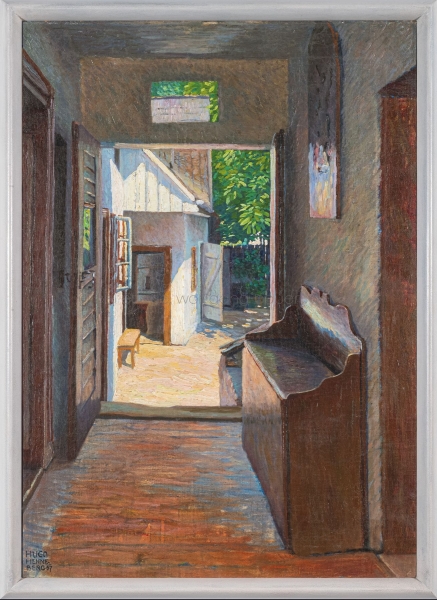1863 – Vienna – 1918
Photographer, etcher, wood and linoleum cutter, painter
The graphic artist Hugo Henneberg was born on 27.7.1863 in Vienna.
1882-1887 studied physics, chemistry and mathematics in Vienna. In 1888 he received a doctorate in physics. Since 1887 he was engaged in artistic photography. Following a study trip to the USA, he became a member of the Vienna Camara Club in 1891, and in 1894 the Linked Ring London accepted him.
Together with the photographers Hans Watzek and Heinrich Kühn, Henneberg founded the Trifolium (The Cloverleaf). They brought the technique of rubber printing to perfection. In 1897, the Trifolium exhibited together for the first time. The art-photographic works enjoyed such popularity that some pictures were reproduced in Ver Sacrum and in 1902 the artists of the Trifolium were given their own exhibition at the Secession. From1898 Henneberg worked as an etcher and painter, and from 1903 as a wood and linoleum cutter (Wachaumappe). In 1910 he finally gave up photography.
The Henneberg family was very closely associated with the Klimt circle, and he was a close friend of Josef Hoffmann and Koloman Moser. Hugo Henneberg was very close to the ideas of the Secession and was considered a typical representative of the art-minded and wealthy upper middle class that supported the Secession and later the Wiener Werkstätte.
Josef Hoffmann planned the Villa Henneberg in 1901 as part of the villa colony on the Hohe Warte, which he also furnished completely except for the room of Mrs. Marie Henneberg, which was planned by Koloman Moser.
His wife Marie Henneberg, who as an art lover and patron held an important position in Viennese society at the turn of the century, had her portrait painted by Gustav Klimt. This portrait was placed in a prominent position in the entrance hall of the Villa Henneberg by Josef Hoffmann and integrated into the architectural design of this room. Henneberg died on July 12, 1918.
Lit.: Thieme Becker, Allgemeines Lexikon der bildenden Künstler. Von der Antike bis zur Gegenwart, vol. 16, Leipzig, p. 391; Sekler, Eduard, Josef Hoffmann p.41. Natter, Tobias (ed.) Gustav Klimt, Painting Design and Modern Life, p.132.

 VIEW FROM THE HALLWAY INTO THE SUNNY COURTYARD
VIEW FROM THE HALLWAY INTO THE SUNNY COURTYARD